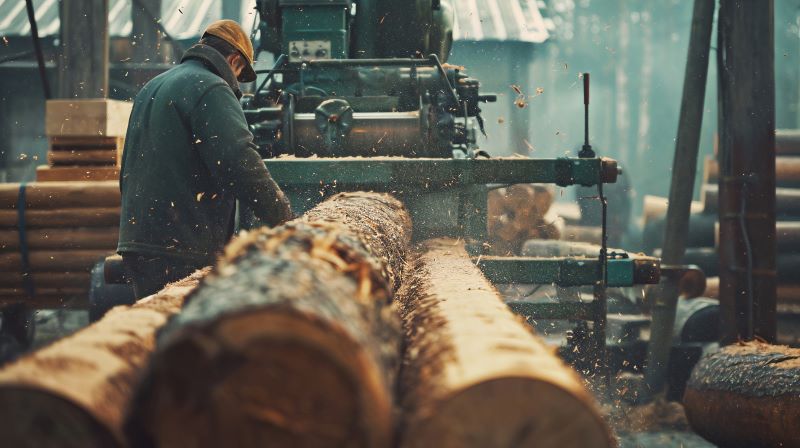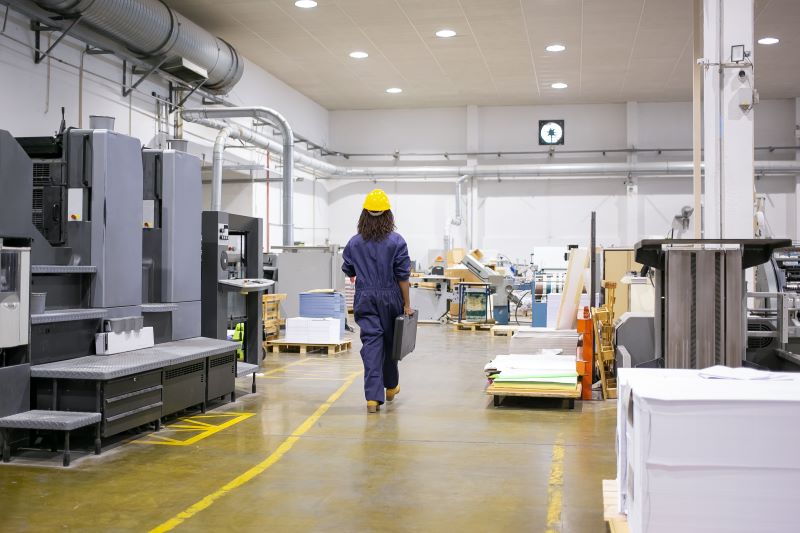We produce close to 400 million tons of plastic every year, according to a recent Statista report. That’s approximately the same weight as seventy of the Great Pyramids of Giza, which are both huge and made out of thick, dense stone. One of the issues with managing plastic waste is that it can be difficult to compress. Recycling bins, for example, are often more full than the garbage bin but weigh only a quarter as much. This low density also contributes to plastic pollution as pieces are easily carried by the wind.
Recycling machinery manufacturers developed plastic crushers in order to effectively reduce and process plastic waste, increasing its density. This processing allows plastic to be recycled and reused. Without plastic crushers the plastic problem would be 100x what it is today.
The Birth of Plastic Crushers
Plastic crusher technology was born around the 1970s in response to the burgeoning plastic waste problem. As plastic became the world’s most versatile material, it naturally also became one of the most used, from food storage to household goods to industrial packaging. However, these very attributes also make plastic a persistent environmental pollutant. Early waste management systems struggled to cope with the increasing volume of plastic waste, leading to overflowing landfills. Without the general public aware of how long plastic waste takes to break down, there was little market for processing and recycling plastic waste specifically.
As the negative impact of plastic began to rear its ugly head, people developed the first plastic crushers. These initial machines were rudimentary, designed primarily to break down large plastic items into smaller, more manageable pieces. The primary objective was to reduce the volume of plastic waste, making it easier to handle and transport. While these early crushers served their purpose, they were limited in their capabilities, often resulting in uneven and inconsistent output sizes.
Introduction of Granulators and Shredders
The first major milestone in plastic crusher technology came with the introduction of granulators and shredders. Unlike their predecessors, these machines achieved more uniform particle sizes, a critical advancement for recycling processes. Granulators used high-speed rotating blades to cut plastic into small granules, while shredders employed slower, more powerful blades to tear plastic into shreds.
This innovation was crucial for the plastic recycling industry. By producing more consistent and smaller plastic particles, granulators and shredders made it possible to melt down and remold plastic into new products, reducing the demand for new plastic and diminishing the environmental pressures caused by plastic waste.
The Move to High-Efficiency Crushers
As the demand for plastic products continued to rise, so did the need for more efficient plastic waste management solutions. The late 1980s and early 1990s brought high-efficiency plastic crushers to the market. These machines were designed to handle a broader range of plastic materials, from soft films to hard plastics, and to operate at higher capacities.
High-efficiency crushers featured enhanced blade designs, improved motor power, and more robust construction. These advancements allowed them to process larger volumes of plastic waste with greater precision and reduced maintenance time. The introduction of these machines marked a significant leap forward in plastic recycling, helping the industry to curb the growing tidal wave of plastic waste.
The Addition of Automation and Smart Technology
The next significant transformation in plastic crusher technology occurred in the early 2000s with the integration of smart technology. Like almost every industry embracing automation in the age of smart technology improved efficiency and reduced labor costs. Plastic crushers were equipped with sensors, programmable controllers, and other smart technologies that allowed for more precise control and monitoring of the crushing process.
Automated crushers could adjust their operations based on the type and volume of plastic being processed. They can also sort the plastic by color. These machines could be integrated into larger waste management systems, allowing for seamless coordination between different stages of the recycling process. While the incorporation of smart technology is still underway, already it has improved the efficiency of plastic crushers to the point of recycling becoming a more profitable business prospect.
Energy Efficiency and Environmental Considerations
As awareness of environmental issues continues to grow, so too has the demand for more sustainable plastic recycling technologies. In the last decade, there has been a shift towards developing energy-efficient plastic crushers.
One key innovation has been variable-frequency drives (VFDs) in plastic crushers. VFDs allow machines to operate at varying speeds, optimizing energy use based on the specific requirements of each crushing operation. This not only reduces energy consumption but also extends the lifespan of the machines by minimizing wear and tear.
Environmental considerations also led to the development of quieter plastic crushers, reducing noise pollution. Innovations such as soundproof enclosures and advanced dust collection systems help limit the intrusiveness of plastic crushing operations, making them more acceptable in urban and industrial settings.
The Future of Plastic Crusher Technology
The transformation of plastic crusher technology over the decades has been marked by significant milestones and innovations, each contributing to more efficient and sustainable plastic waste management. While the challenge of managing plastic waste remains immense, developments in plastic crusher technology will continue to evolve in response.
With advancements in artificial intelligence and machine learning, the next generation of plastic crushers is likely to be even more intelligent, efficient, and profitable. These machines will play a vital role in the global effort to reduce plastic waste, promote recycling, and move towards a circular economy.




